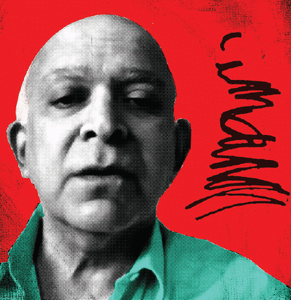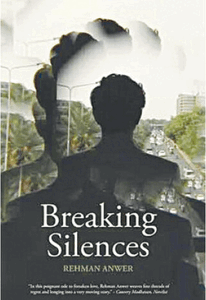
Gazetteer of the Lahore District 2022
By Deputy Commissioner Lahore, Government of Punjab
Sang-e-Meel, Lahore
ISBN: 978-9693534450
324pp.
The earliest records of gazetteers date back to ancient Greek and Chinese accounts of cities and their environs. Gazetteers were also commonly compiled in mediaeval European towns, to establish parochial pride for particular cities within their broader hinterlands.
Historically, gazetteers contain maps, census details, socio-demographic data and empirical details on economic, recreational and criminal activities in a city. In this, they are taken as sources of ‘reliable’ information, as ‘official’ accounts that prop up discursive, material and cognitive truthscapes of a city and its populations.
The Gazetteer of the Lahore District 2022 has been compiled and published after a period of more than a century — the last such document came out in 1916 — by a dedicated team of academics, including historians and social scientists, supported by the office of the Deputy Commissioner (DC) of the city and the Federal Board of Revenue of Pakistan.
The first of the book’s four broad parts looks at Lahore’s built and cultural heritage, giving an overview of the city’s history and listing its key monuments. However, a logical order is missing here as the listing loosely follows the monuments’ construction dates. Their thematic categorisation also appears somewhat random.
A city gazetteer revived after 100 years is a first step towards building a replicable template for Pakistan’s other urban centres
This makes it difficult to follow through as the monuments pop up one after another without any temporal or narrative continuity. Spatial relationships between the monuments are unclear — including a context map with appropriate annotations, dates, significance, type of monument and similar details might have helped readers better situate the monuments across the city’s temporal and morphological fabric.
‘Part B’ describes Lahore’s geography, its river systems, climate trends and offers rich detail on flora and fauna. There are useful tables of common animal and plant species with both their local and English names and a list of the city’s contemporary urban forests and traditional green spaces, such as the Shalimar Gardens.
This is followed by a section on cultural heritage and festivities, such as various urs [death anniversary] events and seasonal and literary festivals. Then comes a description of the literature on the city, ranging from the works of Ghaznavid and Persianate writers, through to Bulleh Shah and Waris Shah, up to contemporary authors writing in English, Urdu and Punjabi.
Quite interesting here are various quotations that extoll Lahore in poetry over centuries, from English poet John Milton’s Paradise Lost to Rudyard Kipling’s works, to Allama Muhammad Iqbal and Nasir Kazmi’s musings on the city. This section also highlights the city’s prominent cinematic and television heritage, as well as its fine arts, kite-making and metalwork.

Compared to the other sections in ‘Part B’, the section on Lahori cuisine is disproportionately — and disappointingly! — brief. Only a few paragraphs and a handful of photographs are included, but following this is a much longer section on the Punjab Food Authority, with extensive details on the Authority’s functions, ongoing projects and the citizen complaints it has resolved.
Then comes a list of Lahore’s traditional sports, such as pehlwani [wrestling] and pigeon-flying, as well as descriptions of the city’s more modern, publicly accessible athletics facilities such as clubs and stadiums.
The demographic data in the Gazetteer is quoted directly from the 2017 census and the section on ‘urbanisation’ is largely a description of The Urban Unit, a research and consultancy company owned by the Government of Punjab. Several land-use maps and master plans of Lahore City and Lahore Division are included, but the low resolution makes them difficult to read. Putting them in flip-out form would have made them more visually accessible.
The section on education is quite thorough, citing as it does the city’s multiple pedagogical genealogies, from early Islamic-scientific traditions and Al Biruni’s fascination with India and Punjab, to patronage of schools by Afghan and Mughal rulers and from traditionally oriented maktabs [schools], madressahs and missionary schools, to the colonial institutionalisation of education systems.
Tackling the economy and infrastructure, ‘Part C’ is a trip through Lahore’s traditional bazaars, flea markets and niche tradesmen within the Walled City, on to the elite, securitised malls in the newer settlements. Again, one wishes the authors had included a map or visual spatial layout of some kind to help contextualise how these particular economic activities came to develop over time and space.
‘Part D’ shares information on local government and municipal services, with exhaustive data on the district administration and its various roles and maps of Lahore’s five tehsils [administrative areas]. Following a look at the city’s electricity and water supply, waste management and policing, the Gazetteer concludes by highlighting key issues for the city’s future development, the main challenges being rapid urbanisation, environmental degradation and effective coordination amongst various state functionaries.
The Gazetteer’s authors state it to be a “citizen-centric” document: “Unlike the colonial gazetteers that served as an instrument of governance, we intend it to be primarily a handbook and guide for the citizen.” Good then, that a PDF version can be accessed online through the District Commissioner’s website.
However, the book has some technical and pragmatic limitations. Readers might feel a lack of visual coherence across the many figures, tables and graphs — some tables are lined, others are not; colours and fonts vary from one figure to the next; some tables exist only as tabulated text without borders.
Within the main text, individual headings might have been numbered as subsections to make navigation easier. A final revision by a dedicated typesetting/ graphics team might have made the content more visually consistent and readable to common audiences.
It is quite odd that there is not a single map in the entire section on Lahore’s history in ‘Part A’. Cartography, representations and annotations are key elements of spatialising the urban form and its experience for the audience.
This omission might not take away from the obviously massive effort that went into compiling the textual resources, but cartographic data can be especially helpful in such publications to demonstrate urban expansion, the growth and shrinkage of a city and the spread of its various activities, zones and social stratification over time.
In this age of participatory planning approaches and civic agency, seeing representations of Lahore’s citizen-led initiatives, micro-communal activities, grassroots movements and the variegated lifeworlds of its myriad urban subjects would be good, too. Who are the people making up the city? What kind of practices do they engage in? And, especially, how do they (not) relate to or associate themselves with the city? This approach to compilation might have lent the Gazetteer a more human-centric lens.
As governance and municipalities in postcolonial cities come to terms with a rapidly transforming sociocultural urban milieu, perhaps the conception of a ‘gazetteer’ itself needs to be upscaled to reflect shifting demographic trends, technological trajectories and social technicities more accurately.
The modus operandi for such institutional publications also needs to evolve. In its current form, the Gazetteer of the Lahore District 2022 makes for an attractive coffee-table book, but as archival resource it is best suited to libraries or conspicuous individual collections. The sheer thickness and weight of the volume, as well as it being almost entirely in the English language, means it is not quite pragmatic as an everyday, ‘citizen-centric’ guide to the city, given its potentially exclusive audience.
Considering the Gazetteer’s more than 100-year old revival, a good idea would be to create a website — even better, a fully equipped, multilingual smartphone application — to accompany the physical book. Numerous cities around the world proudly host ‘city apps’ to guide both residents and tourists about history and culture, mass transit systems, recreational venues, municipal services and emergency helplines.
Nevertheless, the Gazetteer of the Lahore District 2022 must be lauded as a first step towards building a replicable template for more urban centres across Pakistan, not least Karachi. To quote the Additional DC, “In a city rushing towards the future at a breakneck speed of ‘development’, very few want to stop and take stock of what was and what happened.”
The Gazetteer attempts to do just that but, even with this comprehensive effort, the authors remain humbly cognisant of their inability to capture the city in its entirety. The objective of this compendium, they claim, has been to present “a series of vignettes that, when combined, create a sense of what this indefinable city is.” Notwithstanding its limitations, the book has successfully managed to achieve this effect.
The reviewer is Assistant Professor at the Department of Social Sciences and Liberal Arts, IBA, Karachi, and Associate Director of the Karachi Urban Lab. He tweets @a8junea
Published in Dawn, Books & Authors, June 4th, 2023



































